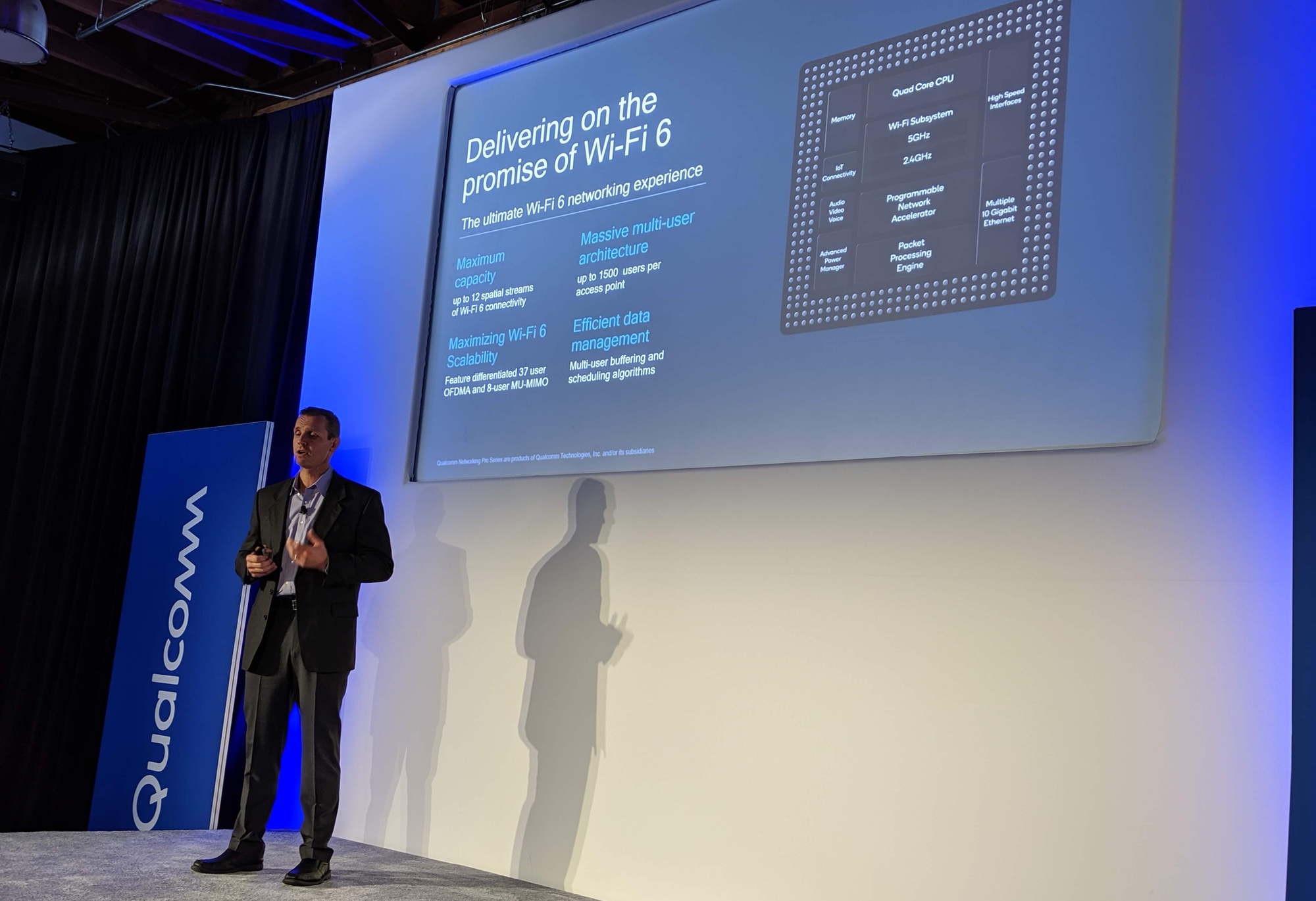Qualcomm Expands Wi-Fi 6 Vision for Better Home Wi-Fi
Improved chips will let your network support more devices at once

SAN FRANCISCO — Your home wireless network could soon become a lot less congested if Qualcomm has anything to say about it.
At an event to promote its advances with the Wi-Fi 6 standard today (Aug. 27), Qualcomm announced its new Networking Pro Series — four different platforms designed for assorted networking products that aim to handle increased wireless traffic from a growing number of devices.
We're long past the days it's just a laptop or two connecting to the same Wi-Fi router. These days, laptops, smartphones, tablets, streaming devices and smart home devices are all jostling for room on the same networking, taxing the limits of what older networking equipment can handle.
"We have a $1,000 smartphone and a $15 light switch sharing the same network, all trying to connect at the same time," said Nick Kucharewski, Qualcomm's vice president and general manager for wireless infrastructure and networking.
Qualcomm's answer is its Networking Pro Series, which it divvies up into the 400, 600, 800 and 1200 platforms. The numbers of each platform indication how many spatial streams of Wi-Fi 6 are supported (four for the 400 series, 6 for the 600 series, and so on); the 600 and 1200 platform also feature more powerful quad-core processors.
You'll find the Networking Pro Series inside wireless networking products. Any Wi-Fi 5 router (or 802.11ac if you prefer the old nomenclature) could theoretically be upgraded with Qualcomm's new platform to take advantage of Wi-Fi 6 ability to handle more devices more efficiently.
To that end, Netgear appeared at today's Qualcomm event to tease a Sept. 6 introduction for a new version of its Orbi mesh router. The Orbi Wi-Fi 6 Mesh system will use Qualcomm's Pro 1200 platform to deliver greater capacity and extended coverage, while allowing more devices to connect to a network at once.
Sign up to get the BEST of Tom's Guide direct to your inbox.
Get instant access to breaking news, the hottest reviews, great deals and helpful tips.
Wi-Fi 6 first emerged last year when the Wi-Fi alliance introduced the new standard (and its much simpler name), with the promise of improved performance. Wi-Fi 6 supports a number of networking technologies that not only boost throughput but makes sure that bandwidth is distributed more efficiently.
We've already seen Wi-Fi 6-capable devices hit the market, from routers to smartphones like Samsung's Galaxy S10 and Galaxy Note 10 flagships. Qualcomm's latest announcement figures to advance the standard by adding support for features such as the ability to connect multiple users at the same time on upstreams as well as downstreams.
The Networking Pro Series wasn't Qualcomm's only Wi-Fi 6 unveiling today. It also touted its FastConnect subsystem that provides Wi-Fi 6 support for its Snapdragon mobile processors.
FastConnect is already in some smartphones, though Qualcomm didn't previously call it that. The FastConnect 6200 subsystem, for instance, can be found on the Snapdragon 855 chipset as well as the upcoming Snapdragon 855+. All told, Qualcomm says almost all of the 225 or so Snapdragon 855 devices include the FastConnect 6200.
A new version, the FastConnect 6800, is coming to future Qualcomm chipsets. It promises support for Wi-Fi 6's alphabet soup of technologies (1024 QAM, ODFMA, and MU-MIMO), but it will also allow for full support of MU-MIMO uplink, which should make it easy to upload video and engage with mixed reality features from your smartphone or mobile device.
Philip Michaels is a Managing Editor at Tom's Guide. He's been covering personal technology since 1999 and was in the building when Steve Jobs showed off the iPhone for the first time. He's been evaluating smartphones since that first iPhone debuted in 2007, and he's been following phone carriers and smartphone plans since 2015. He has strong opinions about Apple, the Oakland Athletics, old movies and proper butchery techniques. Follow him at @PhilipMichaels.

